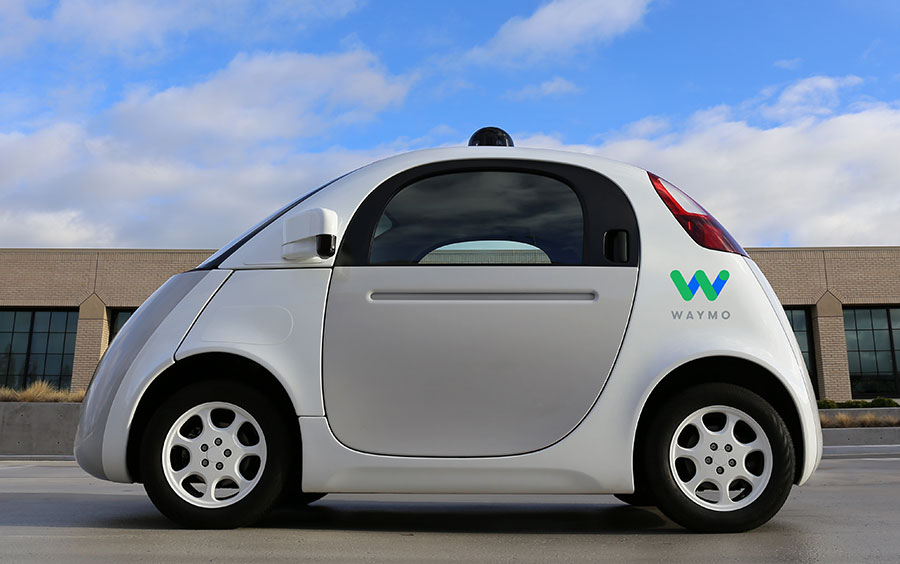Charlie Vogelheim, who is based in San Francisco near Silicon Valley, told GoAutoNews Premium that auto dealers are the logical enterprises to deliver these new mobility services because they have the logistical expertise and capability to do it.
“It’s time for dealers to start taking notice because they would not want to miss out on the opportunity to other players because they (the dealers) were not ready,” he said.
Mr Vogelheim is chairing a major panel session taking a global look at the future of the automotive dealer on day one of the upcoming AADA National Dealer Convention and Expo 2018 at the Gold Coast Convention and Exhibition Centre from September 3 to September 5.
He said that the industry was now using the working title: ACES – which encompassed Autonomy, Connected, Electrification and Shared.
He said that in the San Francisco Bay area “we have four key players that did not provide these services just a decade ago”.
“There is Google which through Waymo represents autonomous,” he said.
“Apple represents connected. Connected can mean so many different things with Lyft and Uber with shared rides, but we all need to be geolocated for these services to work effectively, and that could not happen until we started carrying around smartphones in our pockets.
“Electrification refers to Elon Musk, and shared is the big one because it refers to shared rides or shared ownership.
“In our corner of the world in Silicon Valley, things are happening at a very rapid pace where someone is inventing something or applying a technology to an existing service or to solve a problem.
“If it is automotive-related, the OEMs all of a sudden get excited about it. When we witness that, then the suppliers all of a sudden get excited about it.
“That usually brings in some regulatory arm that gets involved and then the ancillary services like insurance want to see what it looks like for them and then the municipalities start caring about these discussions.
“These people are all gathered around the table talking about it. The dealers need to be at that table. They need to be part of that conversation,” Mr Vogelheim said.
“It may be a little bit fuzzy about what the future is, and not completely clear at this stage, but we all know that mobility is changing.
“For the past 100 years the dealer provided the mobility services in the form of an automobile to the people of Australia, the people who relied on an automobile for their personal mobility for the necessities of life and for the pleasures of travel.
“We know that is changing. We don’t quite yet understand how quickly, and we know it will be different in urban settings than in rural settings, but the current way of providing mobility is not working for a number of reasons.
“One is safety. Road trauma is the number one cause of death for young people in the US. The toll is about 40,000 people a year in the US, and in 95 per cent of the incidents the driver is to blame.
“There is congestion and pollution and the fact is that the current model does not really offer mobility to certain age groups like children and teens and the elderly as well as the blind and disabled.”
Mr Vogelheim said that dealers would face significant changes within their businesses.
“As far as dealers are concerned there are going to be differences in that electrification will require less work compared with the internal-combustion engine,” he said.
“The possibilities of a connected car means over-the-air technical updates, that means work that might have been done in the workshop can be done automatically directly from the OEM to the drivers.
“But between now and then, there is an opportunity for the dealers with current cars which are laden with sensors and systems, and when cars bump into each other these sensors and systems have to be replaced.”
Mr Vogelheim said that a cracked windscreen, which would normally cost a couple of hundred dollars to replace, can now turn into a thousand dollars because the windscreen-mounted camera with the sensors has to be recalibrated.
Mr Vogelheim said that he thought autonomous vehicles would be seen first in commercial use in deliveries or a controlled environment like a campus or a business park.
“Then we will see them on the streets in a professional or commercial form like an Uber taxi-type of service,” he said.
“But those vehicles will be driven around the clock, and they will run up mileage more quickly than a private vehicle does today and they will wear out, they will need work, brakes and tyres and wear and tear on the interior.
“They will also have to be marshalled or checked and verified – even between each user – with people leaving their belongings or leaving the vehicle interior soiled. There are sensors now to verify that but someone still has to clean it up.
“So there will be changes in mobility and the dealers need to understand they are providers of mobility right now. So it is really important that they maintain that mindset with their customers so they are not excluded from the process when mobility takes on new forms.”
Mr Vogelheim said that because Australia was a large country of long distances, the move to mobility for consumers would start on, and be confined to, the east coast cities and Perth area for a considerable amount of time.
“But we’ll likely see autonomous technologies used by commercial trucking for long-distance hauling across the vast interior,” he said.
By John Mellor















 Read More: Related articles
Read More: Related articles

